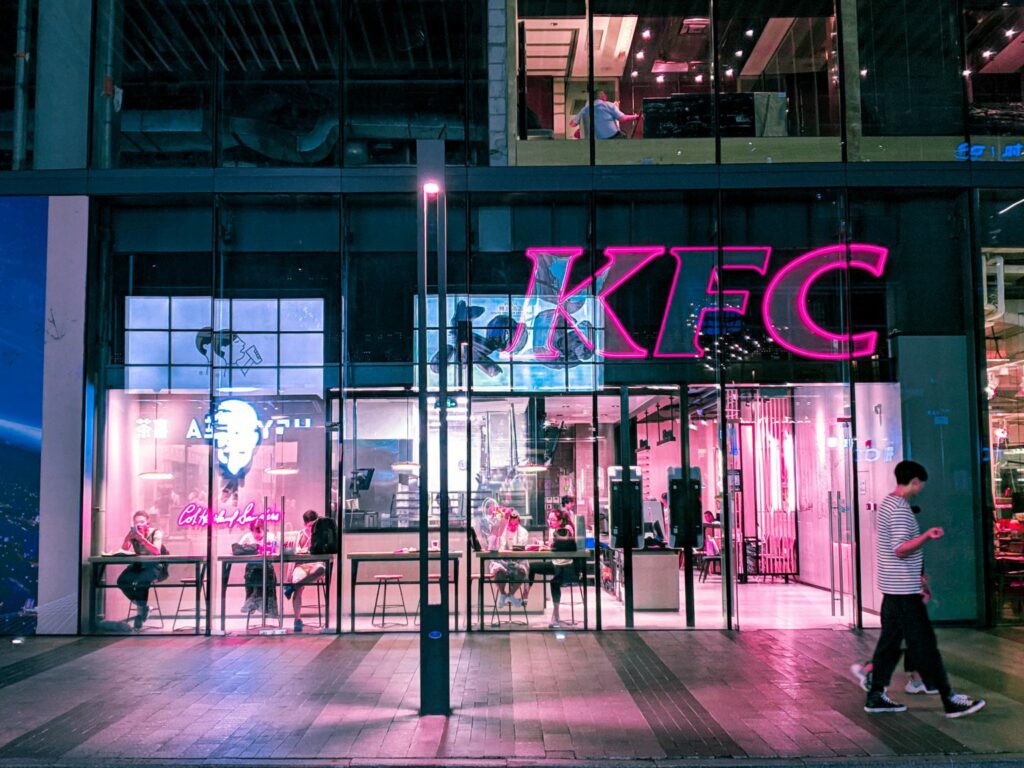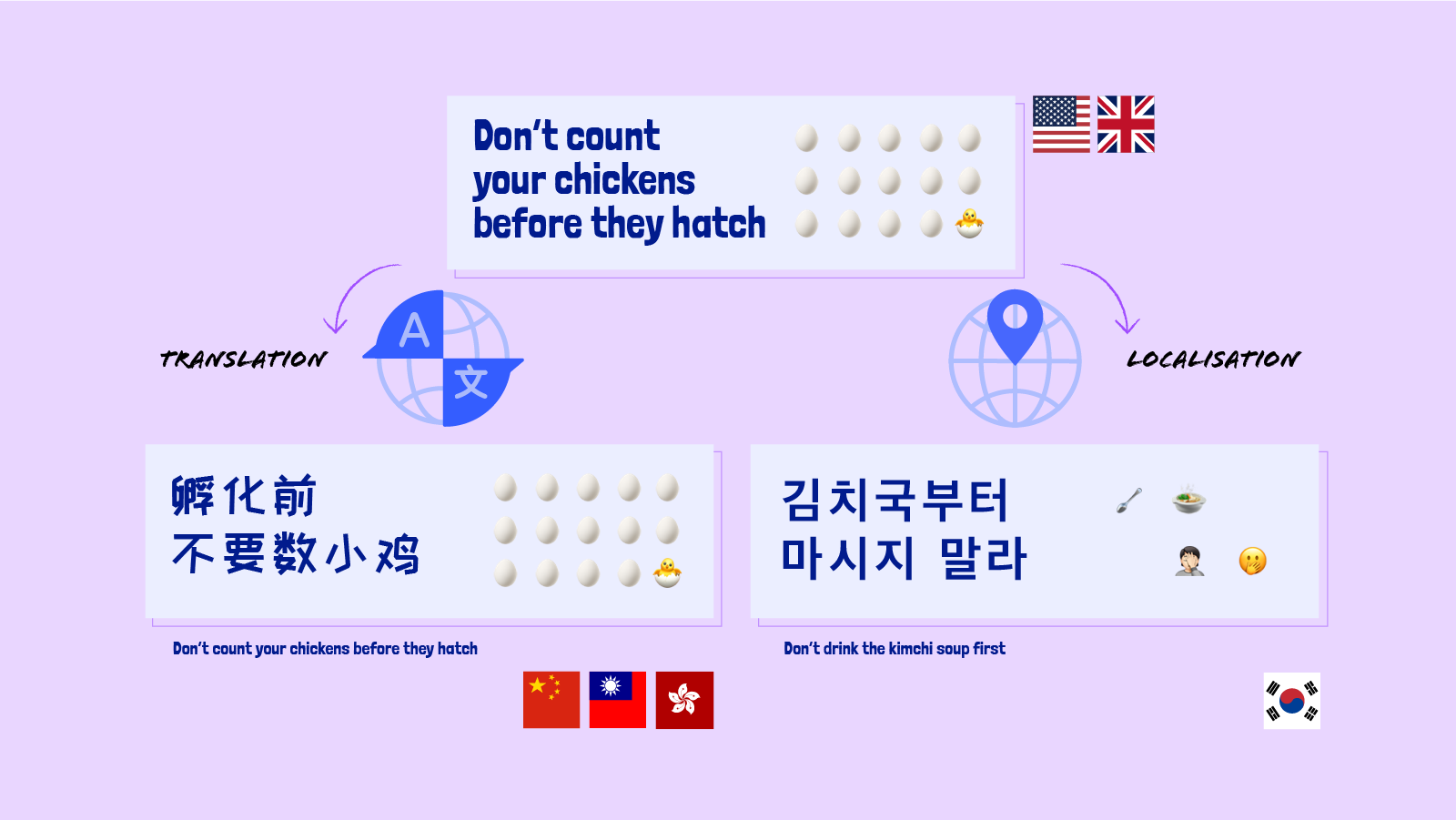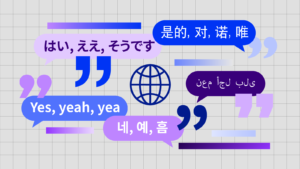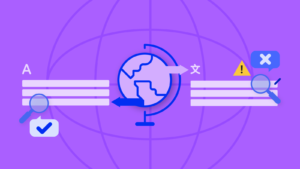You have probably heard of the famous KFC translation error that happened in the 80s when they first introduced their franchise to China. Their slogan “finger lickin good” was translated as “eat your fingers off” in Chinese; sounding hilarious and out of place. The above example is what a word-for-word translation can do to your brand.
A number of businesses still think that translating the language of their services to other languages is enough to attract a bigger audience base. Well, in some cases, it will work, depending on the nature of your business. Content such as educational websites or vlogs doesn’t need localisation whereas a food or shoe business may need more than just language translation to sell.
Let’s start by defining what each term means.
How is Translation Different from Transcreation, and Localisation?
- Translation involves converting text from one language to another while preserving the meaning and intent of the original content. The translator focuses on accurately translating the words and phrases while ensuring that the overall meaning remains intact.
- Transcreation involves recreating content in a new language while keeping the original message and intent intact as well. This process involves a greater degree of creative adaptation and may involve changing the style, tone, and even the format of the content to better suit the target audience. The focus is on creating an emotionally resonant piece that evokes the same response in the target language as the original did in the source language.
- Localisation involves adapting content to meet the cultural and linguistic norms of a particular target audience. This includes making changes to language, content, design, and even images to ensure that the content is appropriate for the local market. The focus is on making the content feel as if it was created locally for the target audience.
Basic Elements Taken into consideration during localisation
1. Measurements
We’ve covered how information can be lost in translation if units of measurement are not translated and converted properly. Except for the United States, Liberia, and Myanmar; all other countries use the metric system such as grams, kilograms, liters, milliliters, centimeters, meters, and kilometers, as their units of measurement.
The United States uses the customary system; quite similar to the imperial system with units such as inch, foot, yard, mile, ounce, pound, quart, and gallon.
A quick check will guide you on the measurement system of your target country for localisation purposes.
2. Currency
We all know that market currency value keeps changing from time to time. The price of one commodity at the time of a document’s translation will not be the same in 10 years to come. Again, there are products that are cheaper in the US or UK but quite expensive due to importation fees in other local states. An easier way to interpret currency is to show the price of a commodity in dollars against its price in local currency. E.g $100(£82.03)
3. Date format
In the UK, dates are written in the format; of Day/Month/Year, while in the US it’s Month/Day/Year. Other countries such as Iran, Korea, and China prefer the format; Year/Month/Date. When localising your content, take this into consideration depending on the locality of the target audience.
4. Suitability for different cultures.
While localising content, you should be able to know which kinds of graphic references will be offensive to your target audience, and which ones will be relatable. For example, food merchandise purposing to expand its business in an Islam-dominated region cannot use pork images to invite potential customers because it is taboo.
Tools for Translation and Localisation
The process of translation and localisation seems tedious and the amount of research and proofreading required to ace your content is immense. But thanks to technology, we do not have to do these manually or even assemble an entire project management team to do the workload.
So here is a list of softwares that can be used to perform the same functions while saving time and money.
Translation softwares
- Auris AI: Auris AI is an AI tool that automatically generates transcripts and subtitles from your audio and video files. These texts can then be translated to over 16 languages for free, allowing you to create transcripts for non-native speakers, or create a video with subtitles for a wider audience.
- Google Translate: Of course, you have heard or even used Google Translate to convert foreign words to English or vice-versa. Sometimes the translation is word for word and may need a little polishing with the help of professional translators.
Localisation tools
- Computer-Assisted Translation (CAT). Your computer can remember and store words/phrases that have been translated in its Translation memory. When working on a similar translation project, the computer will keep suggesting words based on the information already stored; that may be similar to the words keyed in. This makes your work easier; especially when working on a larger volume of work.
- Translation Management System. For an established translation company, the workflow can be tedious to track. You are trying to estimate how far a file is in the translation, editing, proofreading, or localisation stage. A Translation Management System can perform all the above-stated functions and make work easier for the project management team.
- Term Base. A termbase is a glossary created and used in the translation of specific words to a given language. The words are manually added to the glossary by linguistic experts for reference in similar translation projects.
- Auris AI. Apart from its AI tool that automatically generates translation, Auris AI also offers high-quality localisation solutions for over 100 languages, utilising AI and human language professionals to provide a 99% accuracy rate on your localisation needs.
Examples of brands that have translated and localised their adverts
Coca-cola
One of Coca-cola’s most hyped advertisements was the “Share a Coke with” campaign that overturned the consumer market. The concept behind the advert was to print labels with the names of various if not all consumers in their target locations.
In the US, the brand used common English names such as John, Alice, Jane, Mary, Angella, etc. We can all ascertain that 8 out of 10 people in these countries are identified by these names.
Coca-Cola went a step further to personalise the advert in Ireland; choosing Irish names like Aoife, Cathal, Gráinne, and Áine. In China, they replaced names with terms like “classmate” and “buddy”, as natives consider it inappropriate to address one another by their first names.
The localisation strategy applied by Coca-cola in this case managed to achieve its marketing objectives. The advert encouraged consumers to continue “sharing a bottle of coke” in the spirit of feeling appreciated which in turn brought the brand more sales.

KFC’s Localisation Strategy
By allowing franchisees to operate their businesses in synch with local culture, KFC is one of the best strategists in content localisation.
A basic KFC meal would be anything between fries and chicken. However, KFC has not limited its menu to franchisees because of the culture associated with food. For example, in the Philippines, there will be options such as a hot dog served in a bun of chicken. The same applies to tiramisu in France, nachos in Australia, ugali nuggets in Kenya, etc.

Localisation vs Translation; which one is better?
Localisation is an extended form of translation. It does not stop at subtitling or voiceovers. Instead, localized content adopts the culture, market price, and trends of the target audience. Compared to translation, a localized advertisement carries more persuasiveness with the ability to convert leads into sales.






